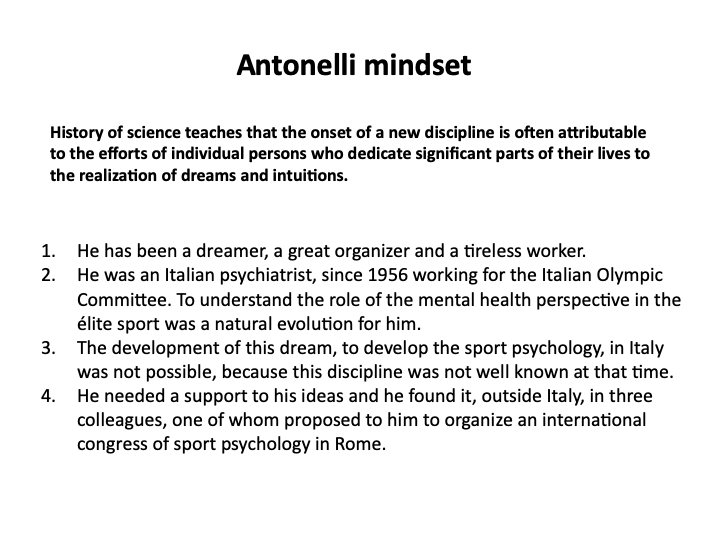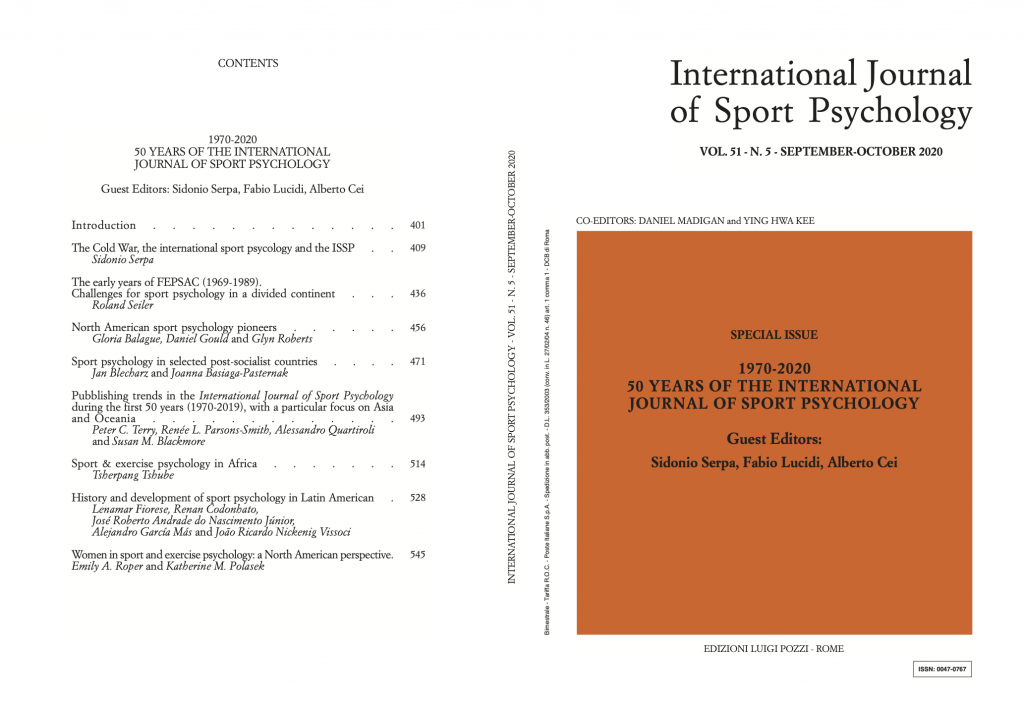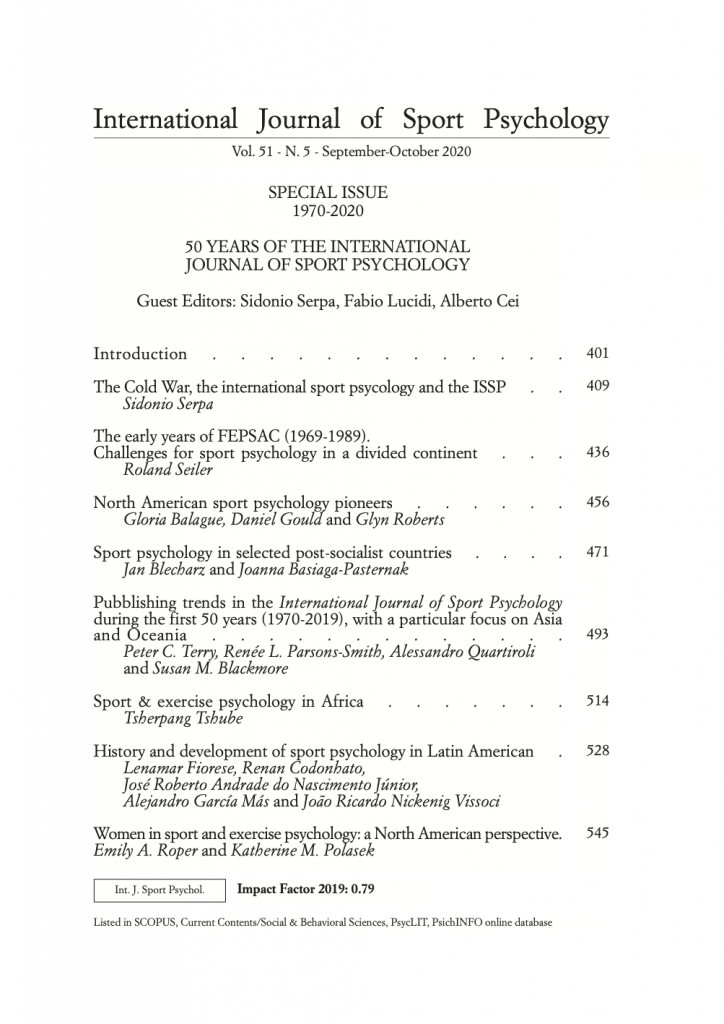The first psychological counseling programs in the field of sport can already be traced back to the 1920s thanks to the pioneering work of Coleman Griffith in the United States and Avksentii Puni in the Soviet Union, but it takes until the 1970s for the sports sciences to be recognized as a field of knowledge that can provide useful information to improve training and sports performance and considered, at the same time, as an interesting field of research for the academic world (Weinberg and Gould, 2019; Ryba, Stambulova, and Wrisberg, 2005).
In top-level sport, the first codified experiences of psychological preparation date back to 1962 when the Japanese Olympic Committee in preparation for the Tokyo Olympics established a section dedicated to the mental training of athletes (Tomita, 1975). The first massive presence of psychologists at the Olympic Games was however only since the Los Angeles Olympics, where as many as 20 sports psychologists will participate for the Canada team. It is since 1988, Seoul Olympics, that most industrialized countries but also developing nations (Nigeria, Cuba, Colombia, and Algeria) began to make systematic use of psychological counseling services (Salmela, 1992).
Initially, since the 1960s, mental training has been a system based on the use of competitive anxiety management techniques and the use of mental rehearsal to improve sports performance. In North America on 1971 the first programs were carried out by Richard Suinn with the Alpine ski team, developing his own psychological preparation program based on the integration of relaxation techniques and mental imagination.
In Europe, the initial research on psychological training was conducted, as in North America, on the role of mental repetition by German scholars, giving it the name of ideomotor training, however, and highlighting that in the psychological regulation of sports action this type of activity has three functions (Frester, 1985). The first is a function programming the motor action that appears through the repetitions performed; the second is represented by the training function, since it promotes the process of improvement and stabilization of performance; the third is the regulatory function that promotes the process of control and correction of motor action. It is recognized, as proposed by Suinn, that the ideomotor reproduction is better if the willingness to mental representation is increased previously with relaxation methods.










